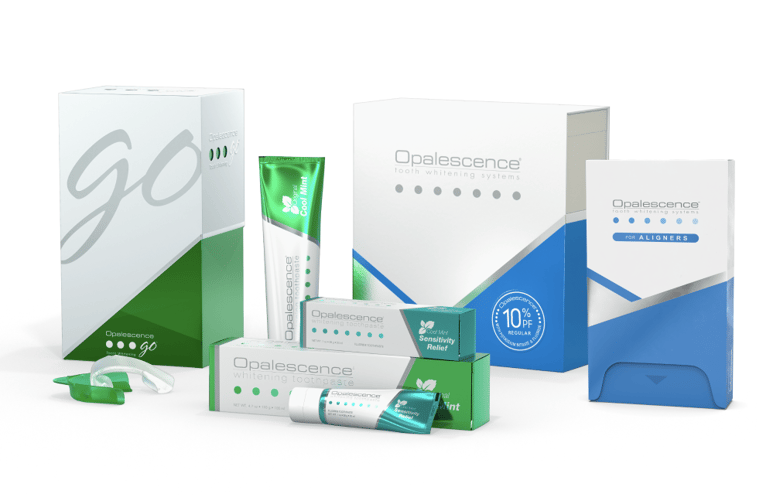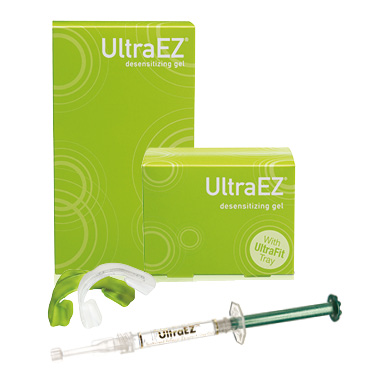What began as a critically viewed fad has now established itself in modern esthetic dentistry: treatments involving tooth whitening have become extremely popular. According to surveys, fifty percent of people asked wish to have brighter whiter teeth. After all they convey health, vitality, and attractiveness. And these attributes in turn are associated with success and sympathy.
Dr. Dr. Hammerer has turned his passion for perfect esthetics into his profession. After studying human medicine in Vienna, he decided to pursue a career in dentistry. From 2004 onwards, he was assistant physician at the Department of Prosthetics at the University Dental Clinic in Vienna and was appointed medical director of the Josefstadt Dental Clinic in 2007. Next to esthetic and conservative dentistry, Dr. Dr. Hammerer counts prosthetics, oral surgery, implant dentistry, as well as the correction of malocclusions by means of esthetic solutions to his special areas of expertise.
Dr. Dr. Hammerer, which options of modern tooth whitening do you offer in your practice?
For more than 15 years now, we have been offering all types of professional tooth whitening in our practice. The spectrum ranges from medical in-office treatment in the dental practice to cosmetic home whitening for independent use at home. In the case of root-treated teeth, we use a special insert that is placed in the tooth and whitens the tooth from the inside.
With the great variety of products on the market, it may not always be easy to choose the most suitable product. Which products do you use for the different indication areas?
The selection of the appropriate product always depends on the individual patient and his/her specific needs. Most patients come to my practice with purely cosmetic wishes and simply want to have whiter teeth.
For cosmetic treatments of the entire dental arch, we like to use OpalescenceTM PF whitening gel, which is injected into individual customized trays. Or, Opalescence GoTM prefilled whitening trays are very easy to use and quite affordable – which is particularly appealing to younger patients.
In addition to cosmetic reasons, there are various medical indications that can be treated with professional whitening products. For example, the use of medications or fluorine often causes discoloration on the teeth. OpalescenceTM BoostTM medical in-office whitening is a very good choice here. With a 40% hydrogen peroxide concentration, this gel is also suitable for use on devitalized teeth, including intra-coronal discoloration.
Single dark root-treated teeth require special whitening, preferably with OpalescenceTM Endo non-vital whitening gel. It is easy to imagine how self-esteem suffers when dark or discolored teeth affect the overall appearance of a natural smile.
Ideally, in a dental practice, various products are available that can be used selectively depending on the indication.
OpalescenceTM is a brand trusted by dentists and patients worldwide - for 30 years!
What experience have you and your practice team gained with tooth whitening over the years?
In the past few years, we have indeed had a lot of beautiful and positive experiences with whitening.
The best part for us is to see the joy of our patients over the wonderful results and how their self-esteem is strengthened by the newly won, immaculate smile. These patients are usually very satisfied and thankful – and therefore gladly come back to our dental practice.
Another positive side-effect is that because of their whiter teeth, patients automatically put more emphasis on their general oral health. Of course, that makes us very happy. This is one of the reasons we have relied on the range of perfectly matched components in OpalescenceTM tooth whitening products for a long time now.
What needs to be considered before a whitening treatment? Do specific topics need to be clarified in advance?
In advance, a thorough clinical examination must first be performed. These include, for example, an X-ray examination and a general examination of dental health for caries, gingivitis, periodontitis, exposed tooth necks, sensitivities, and leaky filling margins. In addition, the current tooth shade and the cause of any discoloration is determined.
This is followed by a comprehensive consultation and the recommendation of a customized treatment method. In other words, is the whitening of all teeth advisable or does it only concern single teeth? Or, is the in-office method or a home whitening variant better suited for the patient? Before the whitening process, of course, a professional tooth cleaning is performed.
Only when these issues are considered consequential damages can be excluded. In view of the complex requirements, it is only natural that the responsibility for whitening treatments lies exclusively with dentists.
How has the profession of the dentist changed in recent years?
Today, dentistry is much more minimally invasive than it was a few years ago. This means that less drilling is done and one always tries to preserve as much healthy tooth substance as possible. In turn this means that restorative methods with fillings, crowns, etc. are very much replaced by esthetic treatments.
Therefore, more and more attempts are being made to achieve esthetically convincing results in a gentle way – for example with acrylic fillings, sealants, or of course whitening treatments. Naturally, we dentists need to adapt to these requirements to always be up-to-date and to be able to meet the needs of our patients.
It is well known that demand regulates the market. More and more products that promise brilliant white teeth can, these days, be purchased on the free market. What is your opinion on the use of these materials?
When it comes to using over-the-counter products, there is above all a lack of professional supervision. There are no instructions or any control by qualified personnel. This means that the risk of wrong or inadequate application, with the corresponding consequences, is very high.
The over-the-counter products seem to be cheaper at first glance. However, they are only available in a much lower concentration than professional whitening products: with a concentration of 0.1% hydrogen peroxide usually no convincing results can be achieved. The result is a noticeable dissatisfaction with the patients, since the price/performance ratio ultimately is seen in connection with inadequate results.
Unfortunately, this results in a negative image of tooth whitening in general. As previously mentioned, tooth whitening should be exclusively in the hands of a professional dental team to avoid such difficulties.
Which risks do you envisage in connection with tooth whitening?
Based on sound professional planning and good dental health, there are no risks or side effects. However, temporary sensitivities of the teeth during (or shortly after) the treatment can occur from time to time in individual cases. These do however tend to disappear within a few days. Special products, such as UltraEZTM desensitizing gel, can be used supportively here.
How do you make your patients aware of the tooth whitening service in your practice?
For many years now, tooth whitening – in conjunction with comprehensive consultation – has been an integral part of our service. Our practice team is intensively trained in this area. Our patients are already actively made aware of the benefits of whitening treatments during professional dental cleaning. To support this, we use appropriate marketing materials such as flyers, posters, or recall cards to provide information.
What recommendations would you care to make to dentists who do not yet offer any, or only a few, tooth whitening treatments?
There are still many colleagues who do not yet offer tooth whitening. From my point of view, I can only recommend reading up on this topic in depth beforehand. There are numerous, well founded studies that can shed light on methods and modes of action. The big advantage in our daily work is clearly patient satisfaction. Tooth whitening is an important instrument for patient loyalty: because satisfied patients also like to come back regularly. Many patients even recommend us to their family or friends. Nothing better could happen to a practice!
Thank you, Dr. Hammerer!
About the interviewee:

Dr. Dr. Christian Hammerer completed his studies in human medicine in Vienna, Austria, before being trained to become a dentist. From 2004–2007 he worked as an assistant doctor at the Department of Prosthodontics at the University Dental Clinic in Vienna. In 2007, he took over the medical management of today's state-of-the-art Dental Clinic Josefstadt, located in Laudongasse in Vienna, Austria. His specialties: esthetic and conservative dentistry, prosthetics, oral surgery, implantology and the correction of malocclusions.
Learn more about Opalescence tooth whitening here.










